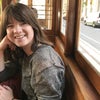As far as I can tell, no oneÔÇÖs written the book specifically about╠řdealing with anxiety during a global pandemic except sci-fi writers. But since an estimated deal with serious anxiety in the best of times,╠řthere are╠řlots of options for people seeking books that offer general mental-wellness help, from straightforward╠řadvice to relatable personal stories. Three recent nonfiction books take╠řdifferent approaches to the task.╠řWhen it comes to deeply felt, personal experiences╠řlike acute anxiety, thereÔÇÖs no such thing as one size fits all. So take╠řwhat resonates, and leave the restÔÇöthereÔÇÖs plenty else to worry about.
ÔÇśWisdom from a Humble Jellyfish and Other Self-Care Rituals from Nature,ÔÇÖ╠řby Rani Shah
ShahÔÇÖs book is pure self-help, but╠řwith a distinctive conceit: the author dishes╠řpractical advice through interesting anecdotes about creatures in the natural world. For example,╠řyouÔÇÖll read that sloths move an average of 123 feet╠řper day. Your takeaway as a human: yes,╠řwe can move a lot faster than sloths, but slowing down to their pace can help us live longer.
Shah presents 18 well-researched examples that are accompanied by cutesy illustrations from╠řartist╠řGemma Correll, pull quotes╠řthat tend to feature specific animal trivia, and╠řgems of╠řlittle koans at the end of each chapter. The presentation gives ╠řthe vibe of╠řa coffee-table╠řor novelty book. It would be a great gift for a younger person╠řor for anyone who likes advice delivered simply, like this lesson from a night-blooming cereus:╠řÔÇťKnowing what time of day works best for you helps you truly bloom.ÔÇŁ Or this piece of wisdom, courtesy of a porcupine:╠řÔÇťYou canÔÇÖt control whether or not you get hurtÔÇŽ. But you can control how much you allow it to affect you.ÔÇŁ╠ř
IÔÇÖve╠řfound╠řthat╠řa good way to ingest annoying truths you know you should listen to is to come at them╠řsideways.╠řShah does just that╠řthrough highly specific facts about wombats and axolotls.
ÔÇśFirst, We Make the Beast Beautiful: A New Journey Through Anxiety,ÔÇÖ╠řby Sarah Wilson
If youÔÇÖd like to face anxiety head-on and yet vicariously, this book is a blend of self-help, memoir, and researched meditation on the authorÔÇÖs own experience with it. She also lives with a thyroid condition and bipolar disorder. is a helpfully messy reflection on what anxiety feels like for Wilson╠řand an honest look at how sheÔÇÖs managed it. To WilsonÔÇÖs credit, sheÔÇÖs not trying to sell anyone an easy fix. She emphasizes that anxiety tends to be a lifelong challenge, especially for those who suffer it acutely, and most of her advice is delivered in a sort of ÔÇťI know, but it does workÔÇŁ╠řtone. (The recommendations are all things youÔÇÖll have heard of before, but Wilson╠řand probably scores of others have found╠řthem to be effective: meditation, breathing exercises, long hikes, and seeking long-term╠řfulfillment instead of fleeting happiness.) ItÔÇÖs a meandering and conversational read, but many╠řof the feelings, activities, and themes Wilson describes are likely to resonate, and her advice is worth considering in a cafeteria-style way: pick whatever seems compelling╠řto you.╠ř
At one point in First, We Make the Beast Beautiful, Wilson evokes Danish philosopher Soren KierkegaardÔÇÖs saying that anxiety is the ÔÇťdizziness of freedom,ÔÇŁ╠řthat modern anxiety can stem from the realization that life is finite, though the world seems to offer infinite choice. There is an existential dread, Kierkegaard argues, that comes with not knowing which╠řdirection to take. Wilson writes:╠řÔÇťMore choice is meant to bring us more freedom (so says capitalism). And yet weÔÇÖre happier when weÔÇÖre bound. In fact, to be rendered choiceless is the ultimate freedom.ÔÇŁ Those words were printed long before mandatory self-isolation became part of daily life, but I had to laugh while reading them in my house, where I now spend 95 percent of my time. They feel very precient╠řright now.
ÔÇśWhy Fish DonÔÇÖt Exist: A Story of Loss, Love, and the Hidden Order of Life,ÔÇÖ╠řby Lulu Miller
Not every book that helps you grapple with anxiety is branded that way. tells the story of taxonomist David Starr Jordan, who in the late 19th to early 20th centuries experienced both quirky success and devastating loss in nearly╠řequal measure. His wife died, his child died,╠řand then an earthquake caused╠řsevere damage to Stanford University, where he was the founding president.
Incredibly, as Jordan passionately collects fish specimens from around the world, they keep getting destroyed in freak accidents: fires, lightning strikes, earthquakes. Miller, cohost of the beloved human-behavior podcast , takes us along for the ride while cheerleading JordanÔÇÖs freakish capacity for resilience. The book feels well-timed if you canÔÇÖt stop thinking about all the things in your lifeÔÇöand the worldÔÇöthat you just canÔÇÖt control. Miller addresses chaos as though itÔÇÖs a living, breathing character in the book. Maybe in another╠řera╠řthat wouldÔÇÖve seemed dramatic. Right about now, it feels oddly relatable. This book is a great escape from╠řcontemporary examples of despair, but itÔÇÖs also an extended reflection on how to╠řweather the storm╠řduring trying times.


